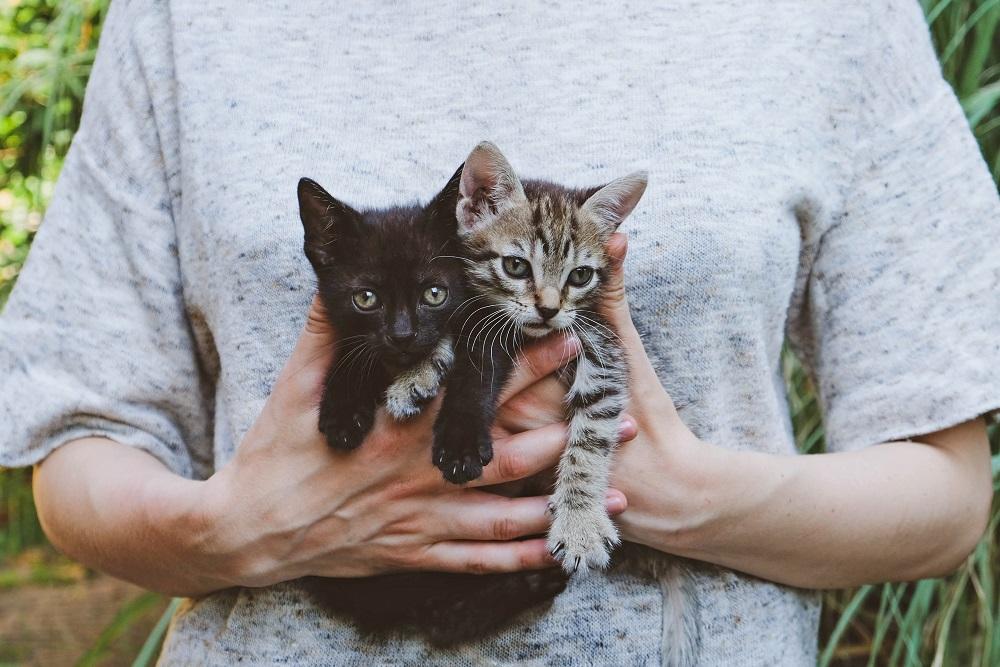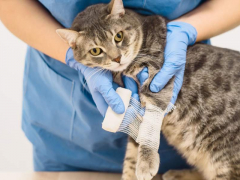
Could adoption or fostering be in your future? Iryna Imago / Shutterstock
Thinking about bringing a new cat into your fold? Congrats! Both adoption and fostering are rewarding ways to help a cat in need. But how do you know which one is right for you?
Ultimately, the decision to adopt or foster will come down to factors like your lifestyle, financial readiness, and long-term plans.
This guide will help point you in the right direction. We’ll cover the responsibilities that come with both options, what to consider when deciding between the two, and why both adoption and fostering are important for animal shelters and rescues.
Adoption Vs. Fostering: What’s the Difference?
The main difference between fostering and adopting a cat is the timeline: whereas adoption is a permanent commitment, pet fostering is a temporary one.
“The way it’s usually set up is the cats are placed in foster while (1) they wait for an adopter and (2) all their medical needs are completed through the shelter,” explains Madison Kerr, founder & owner of Kitten Around Cat Rescue, a non-profit rescue that focuses on pregnant cats, kittens, and education. Since many rescue organizations don’t operate out of a physical facility, they rely on volunteer fosters to provide short-term care until a cat is ready for their forever home.
Fosters play a crucial role in preparing cats for adoption. They help socialize the cats, take them to vet appointments, and provide a safe and clean environment that’s more inviting than the shelter, freeing up room for other rescues.
“Shelters continue to be able to help these animals because of fosters,” says Kerr. “Without them, we wouldn’t be able to operate.”
Every situation will be different, but the average foster period is around two weeks. Kittens tend to go faster, but adult cats, especially those with medical needs, can be in foster care for several months before finding the right adopter.
When you adopt a cat, on the other hand, you’re signing up for a lifetime commitment. Adoption means the cat is your sole responsibility and a permanent addition to your family.
Both options will likely involve a thorough application process. Some rescue groups will conduct interviews and home visits to ensure a good match that benefits both parties.
How Do Foster-To-Adopt Programs Work?
Many rescue organizations and shelters also offer foster-to-adopt programs. Essentially, this gives fosters the opportunity to adopt their foster cat if they fall in love and find they’re a good match.
This is a great option if you’re leaning towards adoption but would like to spend some time getting to know a cat before fully committing. It’s also a good choice if you already have a pet or children and want to see how a feline addition might get along with them.
Since cats are more likely to relax and show their true personality in a home environment, fostering gives you a better picture of their true nature and how they’ll fit into your household.
If you find a foster isn’t a good fit, you can help them find a suitable home and continue your search.
Should I Foster or Adopt? What to Consider

Adoption and fostering will suit different situations. Take Photo / Shutterstock
Fostering and adopting are both rewarding opportunities—but they require different levels of commitment and will suit different lifestyles and circumstances. The path that’s right for you will be highly individual and depend on your home life, resources, and any future plans.
Deciding between adoption and fostering requires an honest look at your finances, time, and ability to take on additional responsibilities. Kerr emphasizes the importance of recognizing that adoption is a 15 to 20-year commitment.
Ask yourself: are you ready to welcome a new family member into your home permanently? Do you have a stable home life? Can you afford ongoing expenses like litter, food, and veterinary care (both preventative and emergency)? Adoption is an absolute joy, but it’s also a long-term and life-changing decision.
If you’re not in a place to adopt but still want a cat in your life, fostering could be a good transitional opportunity. This might suit college students, senior citizens, or anyone who can’t commit to a lifetime of care. Fostering is also a good choice for people who already have pets and can’t take on another but would still like to help.
A foster-to-adopt program might work best for first-time cat owners curious about what life with a cat entails before making a permanent commitment. This could also benefit folks with other pets, families with young children, or anyone who wants to find a cat that suits their unique family dynamic.
“Every cat is different in personality, and although general needs (i.e., litter, food, water) are the same for all cats, behavioral and sometimes medical needs vary,” Kerr points out. Foster-to-adopt programs are a great way to assess how a cat might fit into your home and lifestyle.
Why Both Adopting and Fostering Are Important

Adopting and fostering are important all year—but they’re especially helpful during kitten season. PippiLongstocking / Shutterstock
Unfortunately, overpopulation at animal shelters is an ongoing problem, and rescues across the country are struggling to keep up. Limited space and resources are spread even thinner during kitten season, a seasonal boom in kitten births when warmer weather arrives. Welcoming a rescue into your home—whether permanent or temporary—can help lighten the load.
“Simply put, both adoption and fostering opens up more space and resources for the next cat that needs us,” Kerr explains. Both options save lives: the cat you take in, and another cat who can now be rescued.
When you’re ready to adopt or foster, you can find opportunities in your area through word of mouth. Ask friends with pets—many of them will be familiar with the adoption process and can point you toward a reputable rescue. If you already have a pet, ask your vet for referrals.
If you’re unable to adopt or foster at this time, Kerr says there are still plenty of ways you can help, such as donating, volunteering, or simply spreading the word about the need for adoption and fostering. “All of these options help us to function day in and day out.”







